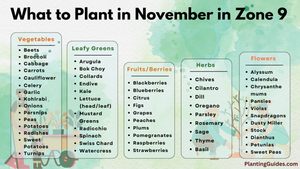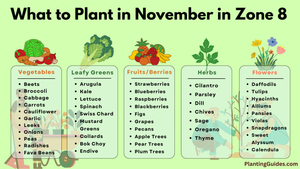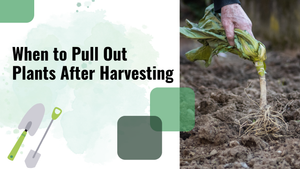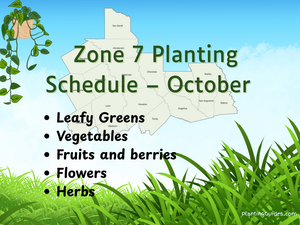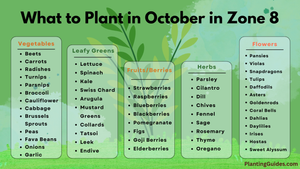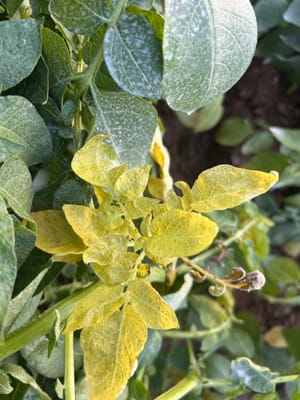
Wild ivy looks green, innocent, and charming at first, but don’t be fooled. It spreads everywhere, chokes other plants, climbs trees, and can turn your garden into a messy jungle.
Let me tell you from my experience, it doesn’t take long for it to take over everything. I battled a tough patch of English ivy in my backyard for months, and I finally won with hard work, mulch, and some patience.
When Ivy started taking over my backyard, I tried almost everything. Now, I’ve finally beaten it, and I’m sharing exactly how I did it so you can too.
First, Know Your Enemy
Before doing anything, I identified what I was dealing with. For me, it was English Ivy (Hedera helix). It climbs walls and trees or spreads on the ground.
The chart below will show you the main types of Ivy and how you can identify them.
| Feature | English Ivy (Hedera helix) | Poison Ivy (Toxicodendron radicans) |
|---|---|---|
| Growth Pattern | Vines along ground and walls | Vines or shrubs |
| Leaf Shape | Lobed, waxy dark green | 3 pointed leaves (“leaves of three”) |
| Root System | Extensive, fibrous | Deep taproot with spreading runners |
| Toxic? | No | Yes – causes skin rash |
| Harmful to Touch? | No | Yes⚠️ |
If you're dealing with poison ivy, be extra careful; gloves and long sleeves are a must.
Also, if you’re unsure, don’t touch it barehanded. Wear gloves and long sleeves.
Manual Ivy Removal
I started by pulling out the ivy by hand, which sounds easy, but trust me, it was a serious workout.
What I Used
- Thick gloves (ivy can irritate skin)
- Loppers or Pruners (for thick vines climbing trees)
- Rake
- Garden hose
- Trowel, hand fork
- Trash bags (ivy can’t go in compost)
How I Did It
When I first tackled the wild ivy in my garden, I had no idea how stubborn it was. After a few weekends, I figured out a system that actually worked.
Here’s what I did, step by step, to help you plan your own fight.
| Step | Task | Tools Needed | Tips/Warnings |
|---|---|---|---|
| 1 | Cut vines at base | Pruners or loppers | Cut about 6–12 inches above soil level |
| 2 | Remove vines from structures | Gloves, rake | Pull slowly to avoid wall/fence damage (especially where it was climbing walls). |
| 3 | Soften soil with water | Garden hose | Makes root removal easier |
| 4 | Dig out roots & crown | Trowel, hand fork | Remove full root system to prevent return |
| 5 | Dispose of ivy safely | Trash bags | Never compost ivy, it can re-root |
Start by cutting all the ivy vines at the base, especially the ones climbing trees and fences. Then pull out as much ivy as possible.
Always wear goggles when removing ivy from a wall or fence to protect your eyes.
I wore long sleeves even on a hot day, because ivy bits can make your skin itchy. Ivy is easier to pull after rain or deep watering.
Covering With Plastic (Solarization)
Some ivy roots were too deep or broke when I tried to pull them out. So I switched to solarization, I covered the area with black plastic to trap heat and kill the roots.
Black plastic absorbs sunlight and traps heat underneath. Temperatures get high enough to kill not just ivy roots, but also weed seeds and everything under it.
What I Did
- I laid black plastic sheeting over the ivy-covered area.
- I weighed it down using bricks and stones to keep it in place.
- Left it there for about 2 months during summer.
- When I removed the plastic, everything underneath was yellow, dead, and dry.
This method is suitable for a big ivy-covered area, you can't dig everything out, so this trick will help you a lot.
You can also use cardboard and mulch to cover the ivy-covered area. This will kill the ivy and stop it from growing back, blocking the sunlight and air.
Both methods worked for me, but they each had pros and cons. Here’s a quick comparison to help you pick what’s best for your garden.
| Material Used | Time Needed | Pros | Cons |
|---|---|---|---|
| Black plastic sheet | 6–8 weeks | Fast results, kills ivy + weed seeds | Needs hot, sunny weather |
| Cardboard + mulch | 8–10 weeks | Natural, biodegradable, improves soil | Takes longer to kill ivy |
Both are effective, chemical-free options, just choose the one that fits your garden and how much time you have.
Using the Herbicide
I really don’t like using chemicals, but some ivy was growing deep in the wall cracks where I couldn’t reach or pull it out. So, I carefully used glyphosate gel and brushed it directly on the leaves.
How I Applied It
- I wore gloves to keep my hands safe.
- I waited for a dry day so the ivy leaves weren’t wet.
- Then I applied the gel directly onto dry ivy leaves using the brush. I tried to cover as many leaves as possible.
- After that, I just left it alone. Within a few days, the ivy started turning yellow and drying up.
You can also cut the ivy and apply herbicide immediately to the open cut. This trick will also give you a better result.
Herbicides can damage nearby plants, so be careful and apply them exactly where you need to.
I checked the ivy again every two weeks, some vines didn’t die completely, so I had to apply the gel a second time.
What I Did After Removing the Ivy
I didn’t want the ivy to come back, so I followed these steps to stop the ivy from growing back and to keep my garden looking nice.
| What I Did | Why I Did It |
|---|---|
| Mulch the area (3–4 inches) | Blocks sunlight so ivy can’t grow again |
| Planted ground cover plants | Fills the space so ivy has no room |
| Checked the area monthly | To catch and pull out any new ivy early |
| Cleared ivy near tree bases | Ivy can slowly hurt trees over time |
Believe me, spending just 10 minutes a month now is way better than dealing with all that ivy again for a whole weekend later.
If You’re Dealing With Poison Ivy
- Wear disposable gloves and cover your arms and legs.
- Do not burn poison ivy! The smoke can hurt your lungs and eyes.
- If your skin touches it by mistake, wash with cold water and soap right away.
- If you get a rash, use creams like calamine lotion or ask a doctor.
- Wash your clothes, gloves, and tools after you’re done.
Getting rid of wild ivy doesn’t happen in one day. But if you keep at it and don’t let it grow back, you can take your space back.
For me, it took around two full weekends and some checking every few weeks. Now my garden looks neat, the trees are clear, and there are no more creepy vines all over the place.
